Crab apples have been an enchanting element of our gardens, parks, and wild landscapes for centuries, offering not only their picturesque beauty but also a rich history of use and cultivation. With a diverse array of tree sizes, growth habits, and fruit characteristics, these alluring members of the apple family present an abundance of opportunities for ornamental and practical purposes. This exploration of crab apples takes us on a journey through their fascinating origins, unique attributes, and the many varieties that have been cultivated for various purposes, as well as offering insights into their propagation, care, and the challenges posed by diseases and pests.
History of Crab Apples
Crab apples, also known as wild apples, are small, tart fruits that belong to the Malus genus of the Rosaceae family. These trees and fruits can be found in various regions around the world, with their origins tracing back thousands of years. While there are over 40 species of crab apples, the most well-known and widely studied is Malus sylvestris, which is native to Europe and Western Asia. This species is thought to be the wild ancestor of the cultivated apple (Malus domestica), which has been bred for its larger, sweeter fruits.
Throughout history, crab apples have played a significant role in the diets and cultural practices of various societies. In ancient Rome, for example, crab apples were commonly used in cooking and preserving processes. Pliny the Elder, a Roman writer, and philosopher, even documented several different varieties of crab apples in his works, highlighting their importance during that time. Additionally, crab apples were used by Native American tribes for both culinary and medicinal purposes, with many tribes utilizing the fruits as a food source and the bark for medicinal treatments.
In European history, crab apples have long been used in traditional folk practices, as well as playing a role in religious ceremonies. In Norse mythology, crab apples were associated with the goddess Iðunn, who was said to use the fruits to preserve the gods’ youth and vitality. In Gaelic folklore, crab apples were often used in divination practices, and in Christian symbolism, they were associated with the Tree of Knowledge in the Garden of Eden.
Cultivation of crab apples as ornamental trees gained popularity in the 18th and 19th centuries, especially in England. The diverse range of crab apple varieties, which differ in size, shape, color, and taste, contributed to their widespread cultivation. Breeders aimed to create and select varieties with striking ornamental features such as colorful fruits, flowers, or leaves. These trees can be found in gardens, parks, and public spaces, providing a burst of color and beauty during their blooming season.
As an enthusiast or hobbyist looking to become skilled in crab apple varieties, it’s important to first understand that they provide a unique glimpse into the original traits and characteristics of their wild ancestors. Unlike modern cultivated apple varieties, which have been bred for improved taste and appearance, crab apples retain a distinctive tart flavor. In recent years, there has been a renewed interest in these fruits, including their use in cider-making, where their high acid and tannin content contribute to creating a complex and flavorful beverage. As more individuals recognize the unique appeal of crab apples, their cultivation and use continue to evolve and adapt to modern sensibilities.
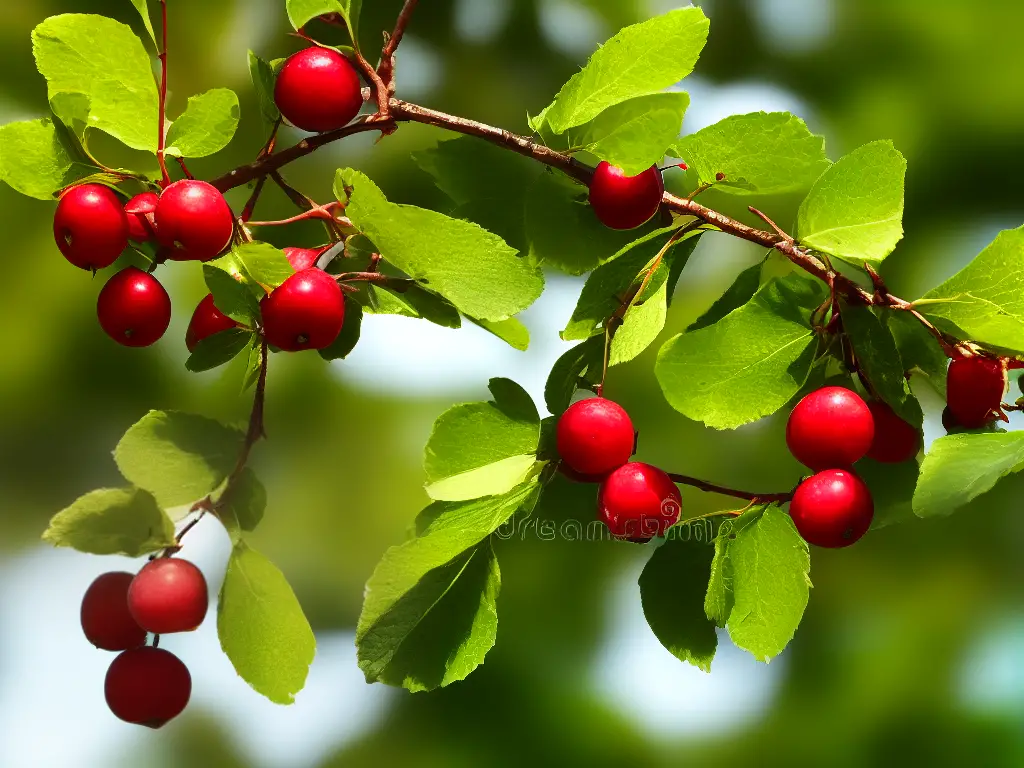
Characteristics of Crab Apples
Part of what makes crab apples, which belong to the Malus species, so fascinating is their small size and distinct features. These deciduous trees or shrubs typically range from 10 to 25 feet tall, making them an ideal choice for smaller gardens or as ornamental trees in larger landscapes. Furthermore, there is a wide variety of crab apple cultivars available, differing in growth habits – from upright and columnar to weeping and spreading forms – which adds to their aesthetic appeal. By immersing yourself in the world of crab apple varieties, you’ll gain a deeper appreciation for these unique and versatile fruits.
The foliage of crab apple trees is also an important aspect to consider when exploring their unique characteristics. Leaves are typically medium to dark green in color, and typically change to vibrant shades of orange, red, or yellow in the fall. In addition to their visual beauty, these leaves offer a dense canopy, providing ample shade during the summer months.
Certain cultivars, such as the ‘Royalty’ and ‘Prairifire’, also showcase purple or bronze foliage, offering yet another stylistic choice for horticultural enthusiasts.
The blooms of crab apple trees are a defining feature, often a much-anticipated spectacle in spring. Showy clusters of fragrant flowers open in various shades of white, pink, or red, depending on the specific variety. Not only do these blossoms create a breathtaking display, but they also attract pollinators such as bees and butterflies, contributing positively to the local ecosystem.
Flower size and timing can vary between crab apple cultivars, with some blooming earlier or later than others – an important factor to consider when selecting a tree for your landscape.
Crab apple fruits are generally small, ranging from a quarter-inch to two inches in diameter, and they appear in a wide array of colors including red, yellow, and orange. While these fruits are usually bitter and not typically consumed fresh by humans, they have culinary applications such as jellies, sauces, and other preserves. Additionally, these fruits provide an important food source for birds and wildlife during the fall and winter months. Each crab apple variety will produce fruit of different size, shape, and color, with some trees yielding a more abundant harvest than others.
Lastly, it is vital to mention the disease resistance of different crab apple varieties. Susceptibility to common diseases like apple scab, powdery mildew, and fire blight will greatly influence the tree’s overall health and appearance. Some crab apple cultivars, like ‘Adirondack’ and ‘Sargent’, boast stronger resistance to these diseases, making them a low-maintenance choice for gardeners.
Understanding the unique features and attributes of crab apples – tree size, growth habits, foliage, flowers, fruit size and color – will enable hobbyists and enthusiasts to select and foster these delightful trees with ease and confidence. As they explore the world of crab apples, they will discover a wide range of cultivars, each with its own distinct features and characteristics.

Crab Apple Varieties and Cultivars
Crab apple trees, also known as Malus, offer over 35 different species and approximately 700 cultivated varieties, showcasing their impressive adaptability and making them highly valued for their ornamental beauty, diversity in fruit color, shape, and flavor, as well as their resistance to diseases. These versatile trees have flourished around the world, with gardeners and hobbyists alike appreciating the variety in species and cultivars that make crab apples a fascinating and rewarding tree to cultivate.
One of the most well-known ornamental crab apple varieties is the Sargent Crabapple (Malus sargentii), which provides visual interest year-round with its delightful pink flowers, bright red fruit, and stunning fall foliage. Other eye-catching cultivars include the Profusion Crabapple (Malus ‘Profusion’) known for its deep pink to red flowers and bronze leaves, and the Golden Raindrops Crabapple (Malus transitoria ‘Schmidtcutleaf’) with its white flowers and tiny yellow fruits.
For those interested in growing crab apples for their edible fruit, there are a number of cultivars that produce palatable fruit suitable for jams, jellies, and cider. The Dolgo Crabapple (Malus ‘Dolgo’) is a popular choice, yielding large, bright red fruits with a tangy-sweet flavor. The Whitney Crabapple (Malus ‘Whitney’) produces a slightly sweeter, yellow-green fruit suitable for fresh eating, while the Centennial Crabapple (Malus ‘Centennial’) boasts a small, red, sweet-tart fruit that is often used for dessert purposes.
Various crab apple cultivars have been bred specifically for increased disease resistance, making them more unyielding to issues like apple scab, fire blight, and powdery mildew. One of these cultivars is the cultivar Malus ‘Adirondack’, which demonstrates remarkable resistance against apple scab and strong growth, in addition to its floral beauty. Another example is the cultivar Malus ‘Prairiefire’, which is admired for its dark pink flowers, striking purple leaves, and vigorous resistance against diseases like fire blight, apple scab, and cedar-apple rust.
Crab apples, or Malus varieties, are popular landscape plants due to their versatile ornamental applications. They not only provide aesthetic value but also offer functional roles in the garden, such as focal points, privacy screens, and attractors for beneficial wildlife. As these versatile trees come in various sizes and forms, gardeners and landscapers can choose from a wide range of crab apple varieties to suit their specific needs and requirements for a particular design.

Ornamental Applications of Crab Apples
Furthermore, some crab apple cultivars display a weeping habit, which adds an extra touch of charm to any garden. The Louisa Crabapple (Malus ‘Louisa’) is renowned for its enchanting weeping branches adorned with light pink flowers and golden-yellow fruit. The Red Jade Crabapple (Malus ‘Red Jade’) is another elegant weeping cultivar, showcasing radiant white flowers and bright red fruit. These captivating trees are ideal for small gardens, as they bring beauty and interest to any outdoor space while catering to the diverse needs and preferences of enthusiasts and hobbyists in the world of crab apple varieties.
One of the most common uses of crab apple trees in landscape design is as a focal point. Due to their stunning spring blossoms, which come in shades of white, pink, and red, these trees are often planted as a feature or centerpiece in gardens and yards. In the fall, their vibrant foliage in hues of yellow, orange, and red adds another layer of visual interest. Certain crab apple varieties, such as Malus ‘Prairifire’ and Malus ‘Donald Wyman’, are especially well-suited for creating a dramatic impact in the landscape due to their vibrant colors and distinctive forms.
In addition to their ornamental appeal, crab apple trees can also serve as effective privacy screens when planted in a row or staggered pattern. Fast-growing varieties, such as Malus x robusta ‘Red Sentinel,’ can help to create a natural barrier between properties or to block unsightly views. Planted in groups, these trees form dense, leafy barriers that offer a sense of seclusion while also providing a stunning backdrop for other plantings in the garden.
One of the main attractions of crab apple trees is their ability to attract beneficial wildlife to the garden. The fragrant blossoms and bright fruits of these trees are highly attractive to pollinators like bees, butterflies, and hummingbirds, which help to maintain healthy ecosystems in the garden and beyond. Additionally, the fruit of crab apple trees serves as a valuable food source for birds, particularly throughout the winter months when other food sources may be scarce. Malus ‘Adirondack’ and Malus sargentii are known for their abundance of fruit, making them excellent choices for attracting a wide range of bird species.
Crab apple trees are known for their varied growth habits and sizes, which allow for unique design opportunities in the garden. For instance, dwarf and weeping varieties such as Malus ‘Sutyzam’ (Sugar Tyme) or Malus ‘Louisa’ can be used as an accent to highlight other garden features or create specific shapes within the landscape design. Overall, the versatility, visual appeal, and ecological benefits of crab apple trees make them an excellent choice for a wide range of ornamental applications, ensuring a stunning and functional garden design.
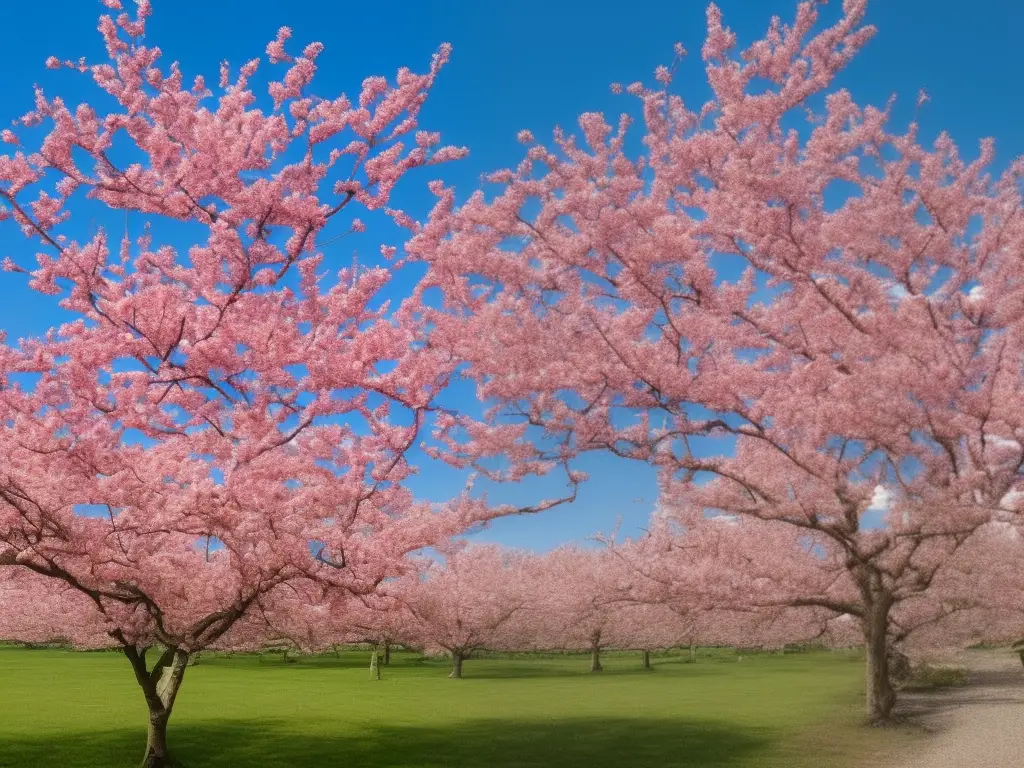
Crab Apple Diseases and Pests
Understanding the different crab apple tree varieties is essential to select the most suitable one for your garden. Although these trees (Malus spp.) are beloved for their spectacular spring blossoms and colorful fruit in the fall, they can be susceptible to various diseases and pests that may affect their health and appearance. Some common diseases that afflict crab apple trees include apple scab, cedar-apple rust, and fire blight, while common pests include aphids and Japanese beetles. Familiarizing yourself with the symptoms, causes, and treatment options for these issues will help you keep your crab apple trees healthy and thriving, ensuring a vibrant garden landscape for years to come.
Apple Scab
Apple scab is a fungal disease that can cause unsightly lesions on leaves and fruit, ultimately leading to defoliation and reduced vigor. Symptoms include olive-green to black spots on leaves, which may eventually turn yellow and fall off. To prevent and control apple scab, select resistant cultivars, maintain proper tree spacing for air circulation, and practice good sanitation by removing fallen leaves and fruit. Fungicides can also be effective if applied early in the season and reapplied as needed.
Cedar-Apple Rust
Cedar-apple rust is another fungal disease that can cause yellow-orange spots on leaves, as well as galls on twigs and branches. This disease has a complex life cycle involving juniper (or cedar) trees as an alternate host. If left untreated, it can lead to defoliation and reduced fruit production. To manage cedar-apple rust, remove affected leaves and prune out infected branches. Planting resistant crab apple varieties and keeping them away from juniper trees can also help. Fungicides may be helpful in controlling this disease, particularly if applied early in the season.
Fire Blight
Fire blight is a bacterial disease that can be devastating to crab apple trees, causing wilting and blackening of leaves, flowers, and shoots. The bacteria infect trees through open wounds or natural openings and can be spread by rain, insects, or contaminated pruning tools. To prevent fire blight, plant resistant cultivars and avoid excessive nitrogen fertilization, which can encourage succulent growth susceptible to infection. Prune out infected branches at least 6-8 inches below visible symptoms, and disinfect pruning tools between cuts. In severe cases, antibiotic sprays may be warranted.
Aphids and Japanese Beetles
Aphids and Japanese beetles are common pests that can cause significant damage to crab apple trees. Aphids are small, soft-bodied insects that suck plant sap, causing yellowing, curling, and distortion of leaves. They can also transmit plant viruses and secrete a sticky honeydew that attracts sooty mold. Japanese beetles are metallic green and copper-colored insects that chew holes in leaves, skeletonizing them and causing unsightly damage. To manage these pests, promote natural predators such as ladybugs and green lacewings by providing a diverse garden habitat. Insecticidal soaps and neem oil can also be effective against aphids, while Japanese beetles can be hand-picked or controlled with pheromone traps. Preventative pesticide applications should be used sparingly, if at all, to avoid harming beneficial insects and disrupting the natural balance of your garden ecosystem.
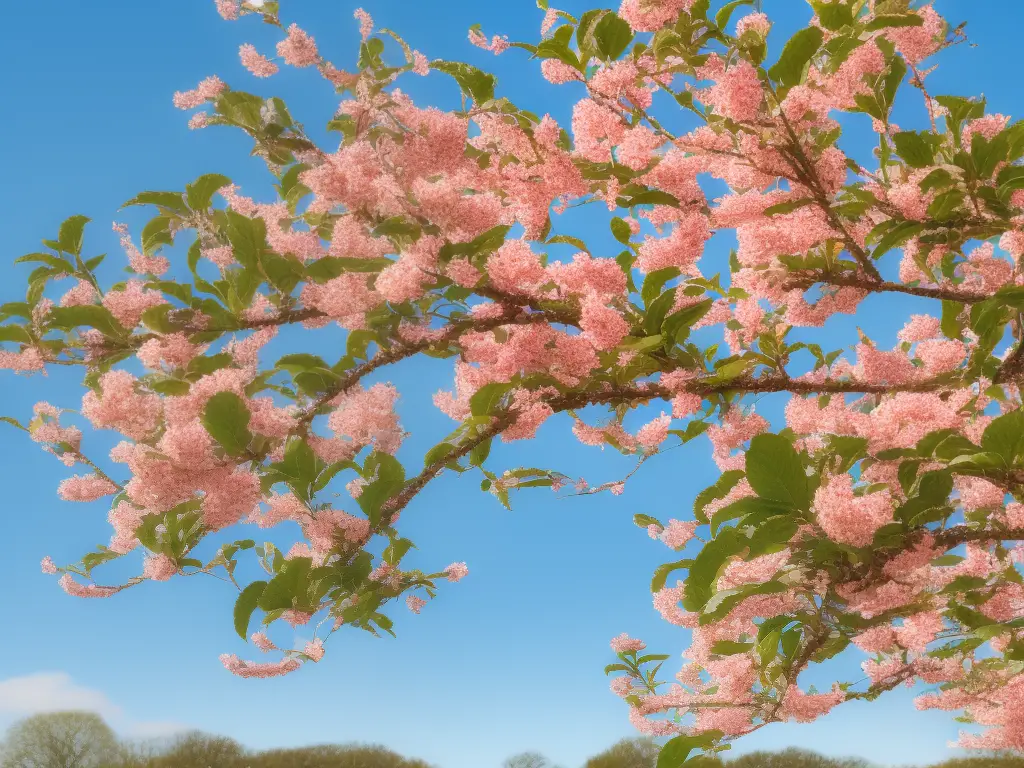
Propagation and Planting of Crab Apples
Given the importance of maintaining a healthy ecosystem for your crab apple trees, it is essential to learn about the various varieties and propagation methods suitable for your landscape. Crab apple trees are versatile and adaptable plants, known for their colorful, fragrant spring blossoms and small, decorative fruit. To successfully grow and maintain these trees, consider different propagation methods such as seeds, cuttings, and grafting to determine the best choice for your desired outcome. Familiarizing yourself with different crab apple varieties and their specific characteristics will enable you to make informed decisions about which trees to add to your garden, keeping in mind their resistance towards harmful pests like aphids and Japanese beetles.
Growing crab apples from seed is one option, but it can be a tedious and slow process. The seeds need to be collected from ripe fruit and should be cleaned and dried before planting. However, crab apples grown from seed can take several years to mature and produce fruit, and the offspring may not have the same characteristics as the parent tree. Additionally, the trees may not be well-suited to your landscape or local climate. As a result, growing crab apples from seeds might be more suitable for patient gardeners with flexible expectations.
Alternatively, propagating crab apples through cuttings or grafting can produce more reliable, faster results, especially if you have access to a healthy, mature tree. For cuttings, young branches or shoots are taken from the desired tree and encouraged to develop roots, which can then be planted into the ground. Proper care, such as providing the correct temperature, humidity, and moisture levels, is crucial for the success of this method. Grafting is another popular technique, in which a scion, a cutting from the desired tree, is attached to a compatible rootstock. This method allows you to select the desired variety of crab apple while benefitting from a hardy and well-adapted root system.
When planting your newly propagated crab apple trees, thorough research and strategic planning are essential. Consider the specific needs of your chosen crab apple variety, such as soil pH, drainage, sunlight exposure, and proper spacing between trees. By selecting the appropriate location and conditions, you can provide an environment in which the trees will thrive. It is also essential to provide regular care and maintenance for young trees, such as watering, fertilizing, mulching, and pruning, to promote strong, healthy growth.
Becoming skilled in crab apple varieties and their care requires understanding and mastering various propagation techniques, as well as proper planting procedures. By familiarizing yourself with the different methods of propagation and carefully planning the location and aftercare of your trees, you can create a thriving crab apple landscape that showcases your expertise and passion for these enchanting plants. One of the important aspects of crab apple care involves establishing and maintaining optimal watering, fertilizing, pruning, and winter protection practices to ensure healthy growth and development.
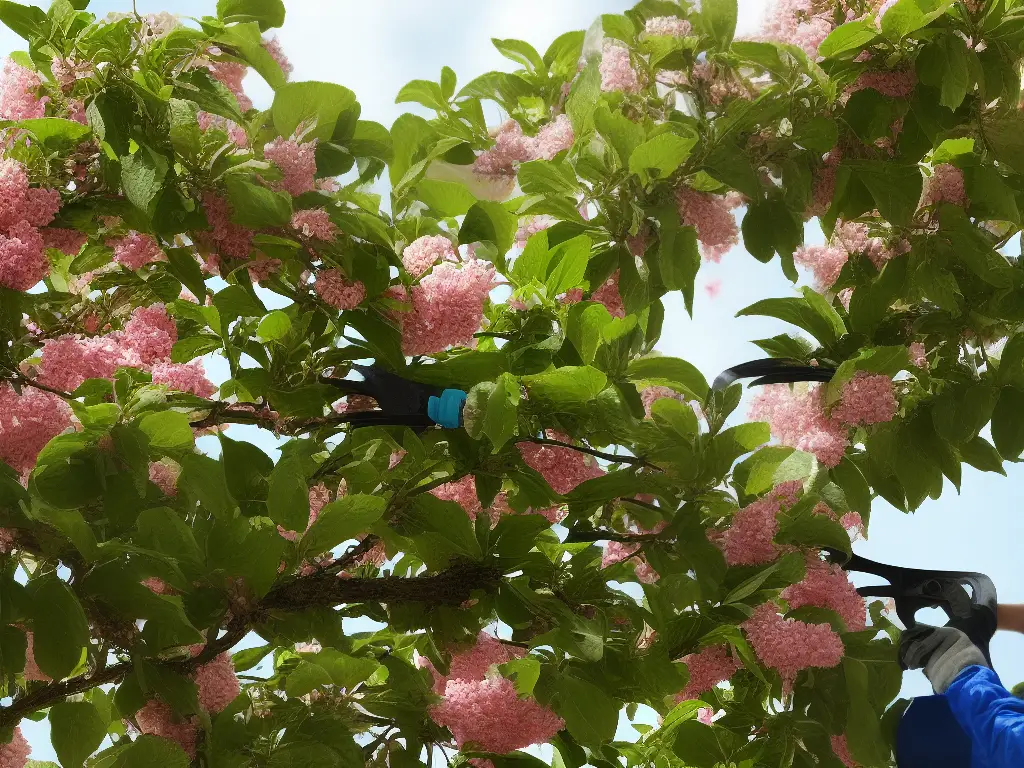
Crab Apple Tree Care
Crab apple trees are a popular choice among garden enthusiasts and hobbyists who appreciate the ornamental beauty and fruit production of these versatile plants. To take care of various crab apple varieties effectively, it’s essential to follow a few key care guidelines that will help your crab apple tree thrive and produce a bounty of beautiful flowers and delicious fruits season after season. As you continue to explore and experiment with crab apples, don’t forget to learn from the experiences of others through gardening communities, classes, or local nurseries, to further expand your knowledge and appreciation of these versatile and much-loved trees.
One key aspect of crab apple tree care is providing the right amount of water. These trees prefer moist, well-drained soil to thrive. It is essential to water newly planted crab apple trees regularly during the first year, providing about 1-2 inches of water per week. As the tree matures, it will generally require less frequent watering, but you should still monitor soil moisture, particularly during periods of drought, to avoid stress on the tree. Be cautious not to overwater, as this can lead to root rot and other issues.
Fertilization is another important practice in ensuring the healthy growth of crab apple trees. It is recommended to apply slow-release, balanced fertilizer (such as 10-10-10) in early spring when the tree begins to break dormancy. This will help provide essential nutrients to promote strong, healthy growth throughout the season. As with watering, it is essential to avoid over-fertilizing, as this can lead to excessive foliage growth at the expense of flowering and fruit production.
Proper pruning is crucial for maintaining the structural integrity and overall health of your crab apple tree. The best time to prune is in late winter or early spring when the tree is still dormant, as this reduces the risk of disease transmission. Regular pruning helps with maintaining the tree’s shape and size, removing dead or damaged branches, and preventing the development of weak or crossing branches that can compromise the tree’s stability. Additionally, thinning out the interior branches promotes better air circulation within the canopy, which in turn helps prevent the onset of fungal diseases.
Last, winter protection is an essential consideration for crab apple tree care, particularly in colder regions where frost and freeze damage can be a significant concern for these trees. One simple strategy involves the application of a thick layer of mulch around the base of the tree to insulate the roots and retain soil moisture. Additionally, it is essential to protect the trunk of young trees from winter sunscald by wrapping it with a tree wrap or painting it with a diluted white latex paint.
Regular monitoring and management of pests and diseases are also crucial for maintaining the health of your crab apple tree. Implementing routine inspection of leaves, branches, and fruits, as well as implementing organic or chemical controls as necessary, can help address any potential threats before they become severe issues affecting the tree’s overall health. By adhering to these care guidelines, you can successfully cultivate a thriving crab apple tree that offers a picturesque addition to your landscape, along with a delicious and versatile harvest to enjoy.
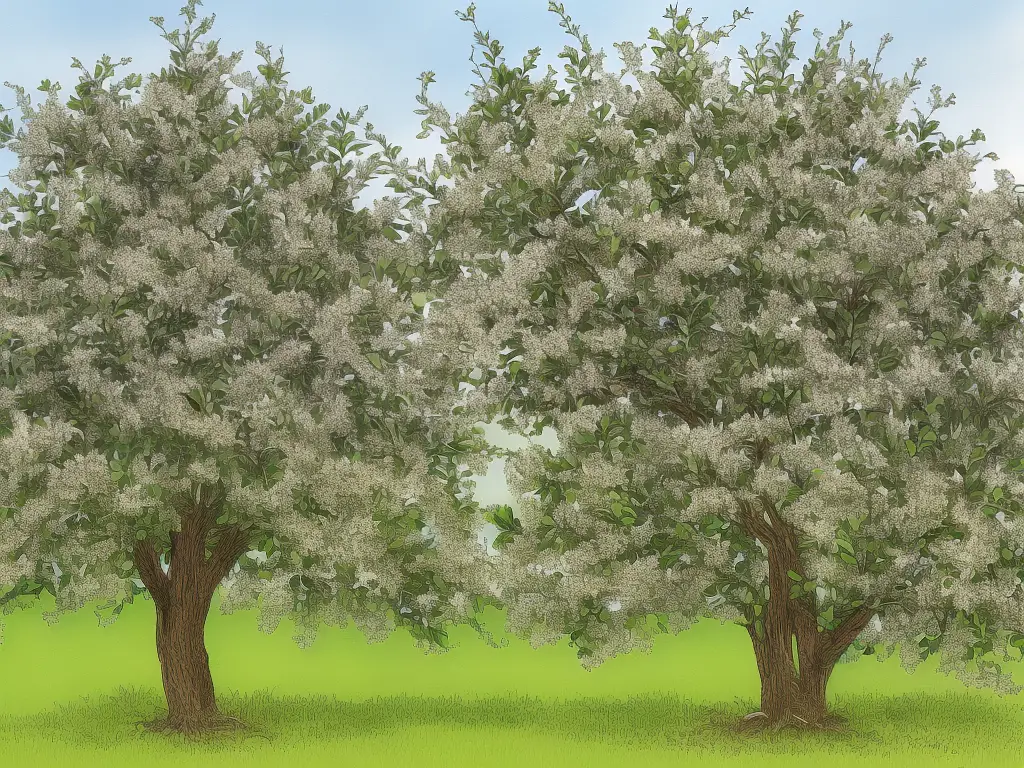
By delving deep into the world of crab apples, we have discovered how these versatile trees have evolved and been cultivated over time, boasting a wide range of characteristics and applications. With knowledge of the unique traits and care requirements of different varieties, you can successfully integrate these captivating trees into your landscapes, reaping the benefits of their beauty, ecological contributions, and potential for fruit harvests. Armed with this understanding, enthusiasts and hobbyists alike can nurture crab apple trees, ensuring their continued success and richness in both ornamental and practical roles for generations to come.